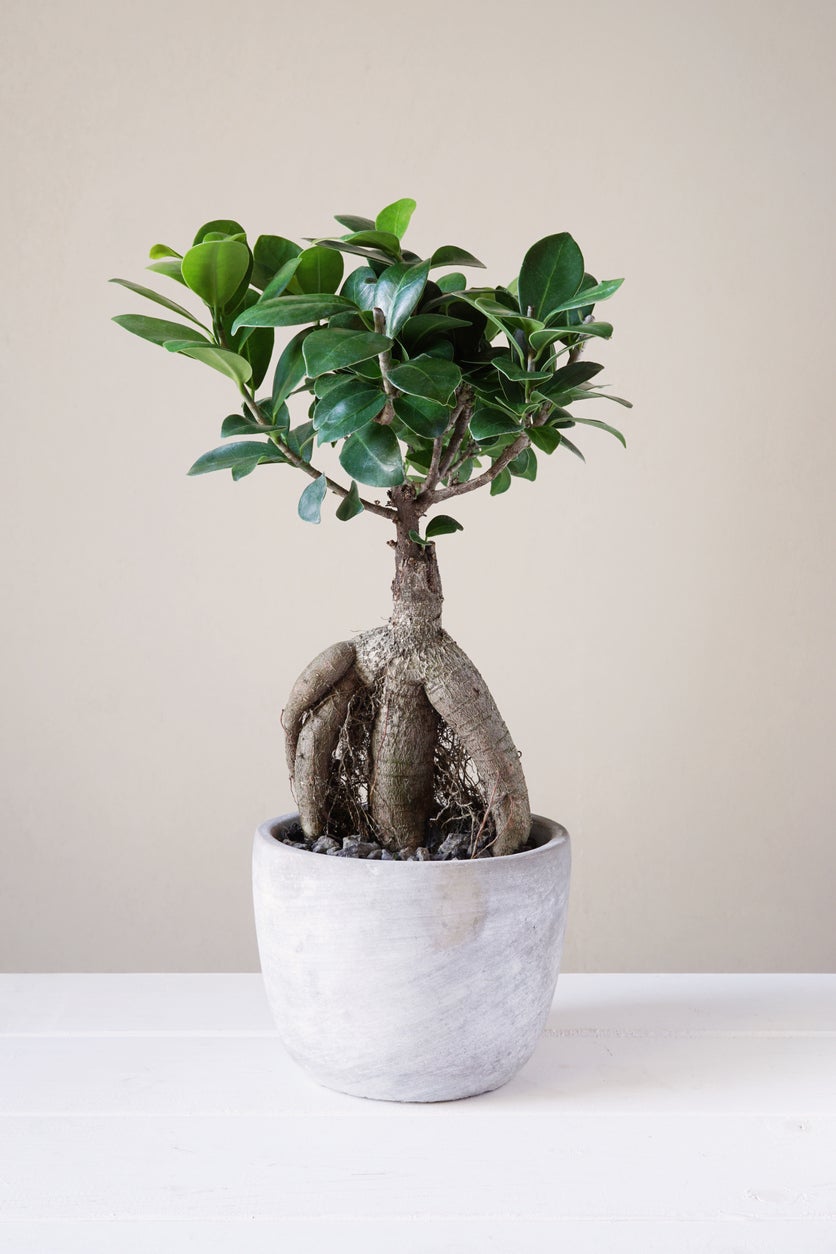Ginseng Ficus Pruning: How To Grow A Ficus Ginseng Bonsai Tree


If growing and caring for a bonsai tree seems too difficult, consider diving into the miniature tree world with a ginseng ficus. It’s unique looking, with aerial roots, and is considered to be very forgiving for beginners. Growing ginseng ficus as a bonsai tree is a great idea for a hobby to try or as a gift for a fellow gardener.
Ginseng Ficus as a Bonsai
Ginseng ficus (Ficus retusa) is one variety of this large group of fig trees. Native to southeast Asia, the ginseng ficus is also called banyan fig, Taiwan ficus, and laurel fig. It is most striking in appearance because it grows thick roots that stay exposed above the surface of the ground. As a bonsai, the effect is of a small tree standing on legs.
The tree grows oval-shaped, dark green leaves. The trunk of the ginseng ficus is thick and bulbous, reddish gray, and has tiger-like stripes. The leaves grow densely, giving you a thick canopy. The best part of growing ginseng ficus as a bonsai tree is that it requires little maintenance.
How to Grow a Ficus Ginseng Bonsai
Ginseng ficus bonsai care is simple and minimal, making this a perfect choice for anyone who is new to bonsai. First, find a good place for your tree. Ginseng ficus naturally grows in warm, moist climates. Place it somewhere that won’t get too cold and out of any drafts that could suck moisture from its leaves. Make sure it will get a lot of indirect light and avoid a spot with direct, bright light.
Your little ginseng ficus will grow well indoors with warmth and light, but it also appreciates trips outside. Set it outdoors in the summer months in a spot that is bright with indirect sunlight, unless you live in an arid climate, in which case the air will be too dry.
A ginseng ficus will tolerate some over or underwatering but aim to keep soil moderately moist throughout the summer and back off a little in the winter. To make the air more humid, set the tree on a tray filled with pebbles and water. Just make sure the roots aren’t sitting in water.
Ginseng ficus pruning isn’t difficult. The art of bonsai is to trim and shape the tree with your own aesthetic in mind. In terms of how much to trim, the general rule is to take off two to three leaves for every six new leaves that grow and develop. Always leave two or three leaves on a branch at least.
Sign up for the Gardening Know How newsletter today and receive a free copy of our e-book "How to Grow Delicious Tomatoes".
With just a little simple care, growing and maintaining a ginseng ficus as a bonsai tree is easy. It’s a creative project for a gardener or any plant lover that can last for years to come.

Mary Ellen Ellis has been gardening for over 20 years. With degrees in Chemistry and Biology, Mary Ellen's specialties are flowers, native plants, and herbs.